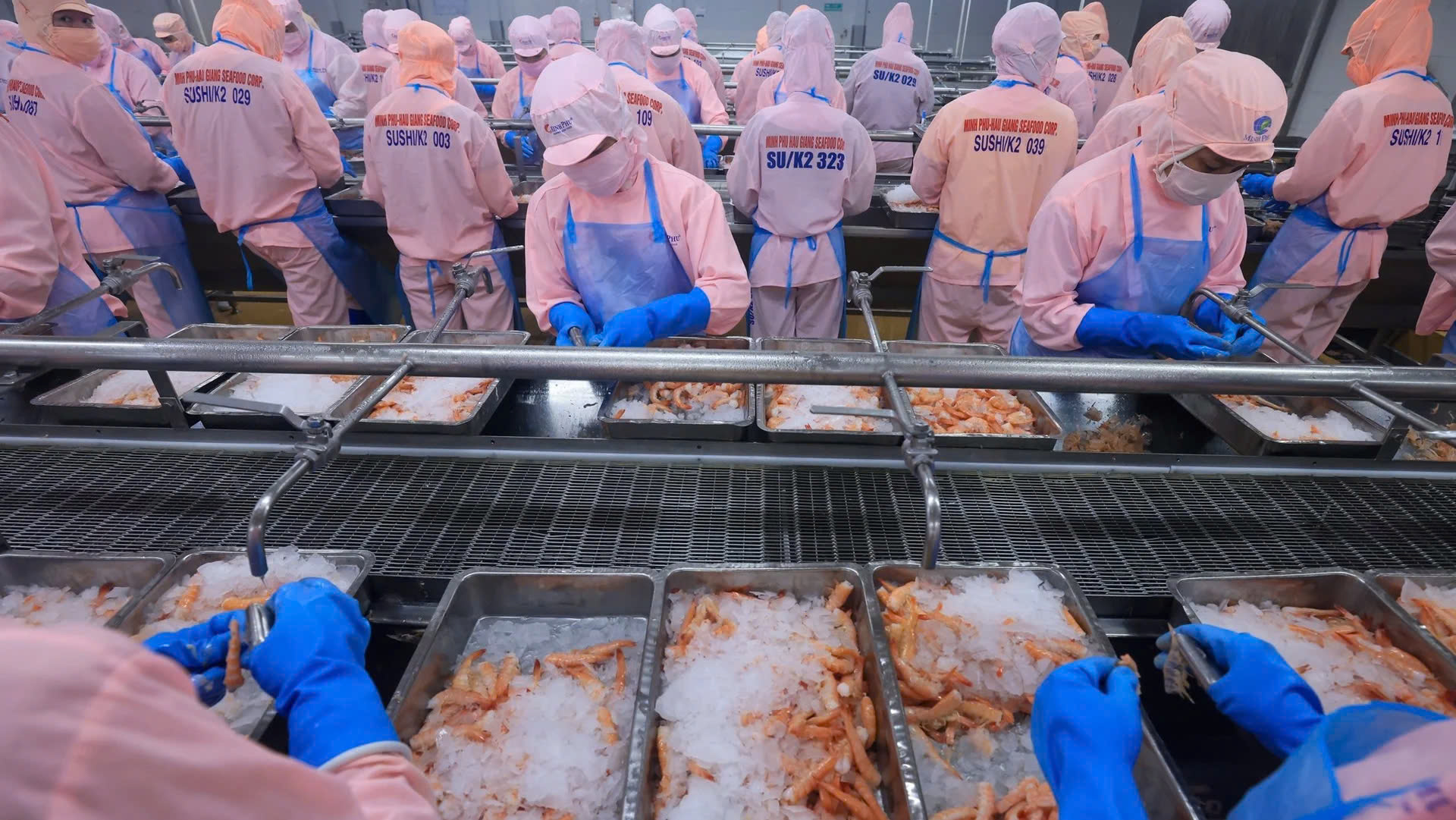While Vietnamese seafood has the potential to strengthen its position in the US market, it will also face mounting competitive pressure from Chinese products in other markets.
 Focusing on deep processing and value addition is the key for Vietnamese seafood to remain competitive in the global market. Photo: Hoang Anh
Focusing on deep processing and value addition is the key for Vietnamese seafood to remain competitive in the global market. Photo: Hoang Anh
The United States is currently a leading importer of several key Vietnamese seafood products, such as shrimp, pangasius, and tuna. According to the Vietnam Association of Seafood Exporters and Producers (VASEP), more than 400 Vietnamese seafood enterprises are currently exporting or planning to export to the US market.
As a result, the seafood sector is among the industries most affected by the announcement of retaliatory tariffs from the US. However, US President Donald Trump’s decision to delay the imposition of these tariffs for 90 days has opened up new opportunities for the seafood industry.
Specifically, according to VASEP, Vietnam’s seafood export value to the United States has continuously declined throughout the trade war period and is expected to fall even further, as China is currently the only country subject to retaliatory tariffs of 125%—without the 90-day delay granted to others.
“Vietnam can take advantage of stable consumer demand in the US to boost shrimp and pangasius exports to this market,” VASEP stated.
This opportunity is further strengthened by the fact that two of Vietnam’s leading seafood exporters—Minh Phu (shrimp) and Vinh Hoan (pangasius)—qualify for exemptions from US anti-dumping duties.
VASEP recommends that businesses take advantage of the 90-day window, during which the tariff rate remains at 10%, to accelerate exports to the US.
In the long term, if favorable tariff policies continue, the seafood industry should focus on core products and value-added processing to seize the opportunity left by China’s shrinking presence in the US market.
However, it remains uncertain how US trade policy will evolve after the 90-day tariff postponement period. Mr. Phan Hoang Duy, Deputy General Director of Can Tho Import-Export Seafood JSC (Caseamex), suggested that businesses should diversify into Asian and European markets to reduce overdependence on the US.
“Our company is reconnecting with former partners in Europe, Japan, and Australia, while also implementing cost-cutting measures,” Mr. Duy shared, highlighting Caseamex’s strategy to mitigate risks from US trade policy.
Nevertheless, challenges remain significant in other markets, as China—being directly impacted by the US-China trade war—is expected to redirect its exports. This means Chinese seafood will fiercely compete with Vietnamese products and others in markets such as Europe, Japan, South Korea, and even within China itself.
This reality poses a challenge for Vietnam’s seafood industry to further strengthen its competitiveness through cost reduction, quality improvement, and a greater focus on deep processing to enhance product value.
In addition, upgrading aquaculture, fishing, and processing practices to meet sustainability standards is a crucial strategy for entering global markets. In particular, compliance with legal and ecologically responsible fishing practices has become a core requirement for wild-caught seafood in international trade.
